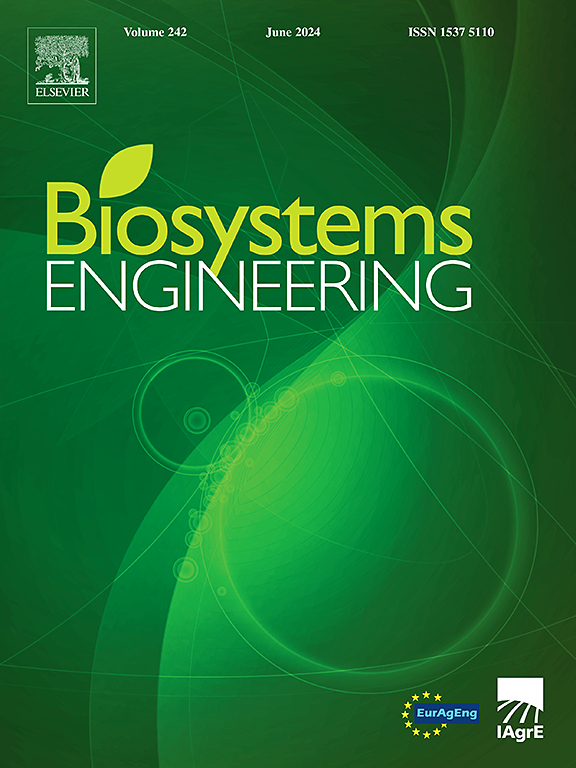深度学习算法,利用3D数据识别单个育肥猪
IF 5.3
1区 农林科学
Q1 AGRICULTURAL ENGINEERING
引用次数: 0
摘要
精准畜牧技术的应用在很大程度上依赖于个体识别。然而,由于成本和时间限制,育成猪很少被标记或以其他方式识别。因此,本研究的目标是确定在三维空间数据上使用深度学习识别育肥猪个体的可行性,并量化所需的数据量、所需的图像分辨率以及使用两种不同架构进行连续识别的再训练频率:点网络(直接利用点云)和三维卷积神经网络(三维 CNN)。使用安装在带有 RFID(射频识别)仪器的饮水器上的 ToF(飞行时间)相机收集数字/深度图像。这些数据的一个子集被用于初步验证研究,其中包括 8 头猪在 14 天内拍摄的 31976 张图像。然后对数据进行处理,以创建不同的训练和测试数据集,其中点云的点集(1500、3000、6000、12000、24000 和 48000)和 3D CNN 的体素大小(50、35、25 和 15 毫米)各不相同。研究结果表明,在点体素尺寸为 15 毫米的情况下,3D CNN 模型在第六次训练后取得了 0.91 的最高 F1 分数。在点集大小为 1500 点的情况下,经过五次训练后,PointNet 获得了最高的 F1 分数 0.90。这项研究强调了利用深度学习技术在实际谷仓环境(包括自然光条件下)中进行个体猪识别的潜力。本文章由计算机程序翻译,如有差异,请以英文原文为准。
Deep learning algorithms to identify individual finishing pigs using 3D data
The application of precision livestock farming technology is heavily reliant on the identification of individuals. However, due to the cost and time constraints, finishing pigs are rarely tagged or otherwise identified. Therefore, the objectives of this study were to determine the feasibility of using deep learning on 3D spatial data to identify individual finishing pigs and to quantify the amount of data required, image resolution needed, and frequency of retraining for continuous identification using two different architectures: PointNet (which utilises point clouds directly) and 3D convolution neural network (3D CNN). Digital/depth images were collected using ToF (Time of Flight) camera positioned over RFID (Radio Frequency Identification) instrumented drinkers. A subset of this data were used for this initial validation study, which included 31976 images from eight pigs over 14 days. The data were then processed to create different sets of training and testing data with varying point sets (1500, 3000, 6000, 12000, 24000, and 48000) for point clouds and voxel sizes (50, 35, 25, and 15 mm) for 3D CNN. The findings revealed that the 3D CNN model achieved the highest F1 score of 0.91 after the sixth training session with a point voxel size of 15 mm. PointNet achieved its highest F1 score of 0.90 after five training sessions with a point set size of 1500 points. This study underscores the potential of utilising deep learning techniques for the purpose of individual pig identification within actual barn environments, including those with natural lighting conditions.
求助全文
通过发布文献求助,成功后即可免费获取论文全文。
去求助
来源期刊

Biosystems Engineering
农林科学-农业工程
CiteScore
10.60
自引率
7.80%
发文量
239
审稿时长
53 days
期刊介绍:
Biosystems Engineering publishes research in engineering and the physical sciences that represent advances in understanding or modelling of the performance of biological systems for sustainable developments in land use and the environment, agriculture and amenity, bioproduction processes and the food chain. The subject matter of the journal reflects the wide range and interdisciplinary nature of research in engineering for biological systems.
 求助内容:
求助内容: 应助结果提醒方式:
应助结果提醒方式:


